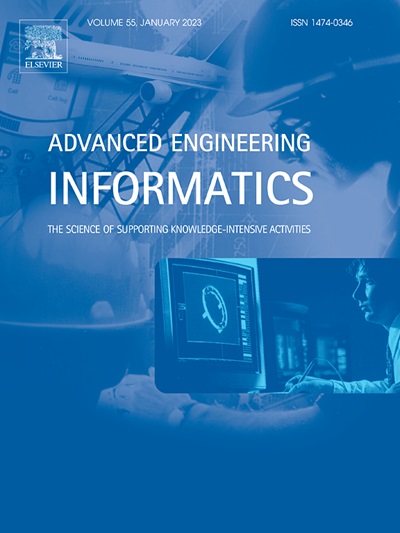Lithium-ion batteries remaining useful life prediction via Fourier-mixed window attention enhanced Informer with decomposition and adaptive error correction strategy
IF 9.9
1区 工程技术
Q1 COMPUTER SCIENCE, ARTIFICIAL INTELLIGENCE
引用次数: 0
Abstract
Remaining useful life (RUL) prediction for lithium-ion batteries is crucial for safe and reliable operation in energy storage systems (ESS). However, the complex characteristics of capacity degradation make accurate and stable RUL prediction a critical problem. In response, this paper proposes a novel framework called FFWinformerAGA, which merges Fourier Decomposition Method (FDM), Fourier-mixed Window Attention-enhanced Informer (FWinformer), and adaptive error correction strategy via Gated Recurrent Unit-Attention Mechanism (AGA). The FDM initially decomposes original sequence into detail and trend components, effectively reducing the nonlinearity. Utilizing two distinct streams, the FWinformer then specially integrates local and global information in both time and frequency domains of the detail component, significantly enhancing the capture of abrupt changes and long-term dependencies under limited samples. Additionally, the AGA is incorporated to mine predictive relationships in the residual series. Experiments and analysis on four real-world datasets yielded the following conclusions: each component within the FFWinformerAGA is demonstrated to be necessity and superior, leading to enhanced results. The model outperforms state-of-the-art models, with improvements in Root Mean Square Error ranging from 30.39% to 85.30%, while maintaining reasonable performance times. Furthermore, the robustness of FFWinformerAGA is demonstrated by training it with fewer degradation samples and incorporating three different types of noise as additional inputs. Findings of this study hold potential application value in prognostics and health management of ESS.
基于傅里叶混合窗的锂离子电池剩余使用寿命预测
锂离子电池的剩余使用寿命(RUL)预测对于储能系统(ESS)的安全可靠运行至关重要。然而,容量衰减的复杂特性使得准确、稳定地预测 RUL 成为一个关键问题。为此,本文提出了一种名为 FFWinformerAGA 的新型框架,它融合了傅立叶分解法(FDM)、傅立叶混合窗口注意力增强型告警器(FWinformer)以及通过门控循环单元注意力机制(AGA)实现的自适应纠错策略。FDM 首先将原始序列分解为细节和趋势部分,有效地减少了非线性。然后,FWinformer 利用两个不同的数据流,对细节部分的时域和频域中的局部和全局信息进行专门整合,从而在有限的样本条件下大大提高了对突变和长期依赖关系的捕捉能力。此外,AGA 还可用于挖掘残差序列中的预测关系。在四个真实世界数据集上进行的实验和分析得出了以下结论:FFWinformerAGA 中的每个组件都证明了其必要性和优越性,从而产生了更好的结果。该模型优于最先进的模型,均方根误差提高了 30.39% 至 85.30%,同时保持了合理的性能时间。此外,FFWinformerAGA 的鲁棒性还体现在使用较少的退化样本进行训练,并将三种不同类型的噪声作为额外输入。这项研究的结果在 ESS 的预报和健康管理方面具有潜在的应用价值。
本文章由计算机程序翻译,如有差异,请以英文原文为准。
求助全文
约1分钟内获得全文
求助全文
来源期刊

Advanced Engineering Informatics
工程技术-工程:综合
CiteScore
12.40
自引率
18.20%
发文量
292
审稿时长
45 days
期刊介绍:
Advanced Engineering Informatics is an international Journal that solicits research papers with an emphasis on 'knowledge' and 'engineering applications'. The Journal seeks original papers that report progress in applying methods of engineering informatics. These papers should have engineering relevance and help provide a scientific base for more reliable, spontaneous, and creative engineering decision-making. Additionally, papers should demonstrate the science of supporting knowledge-intensive engineering tasks and validate the generality, power, and scalability of new methods through rigorous evaluation, preferably both qualitatively and quantitatively. Abstracting and indexing for Advanced Engineering Informatics include Science Citation Index Expanded, Scopus and INSPEC.
 求助内容:
求助内容: 应助结果提醒方式:
应助结果提醒方式:


